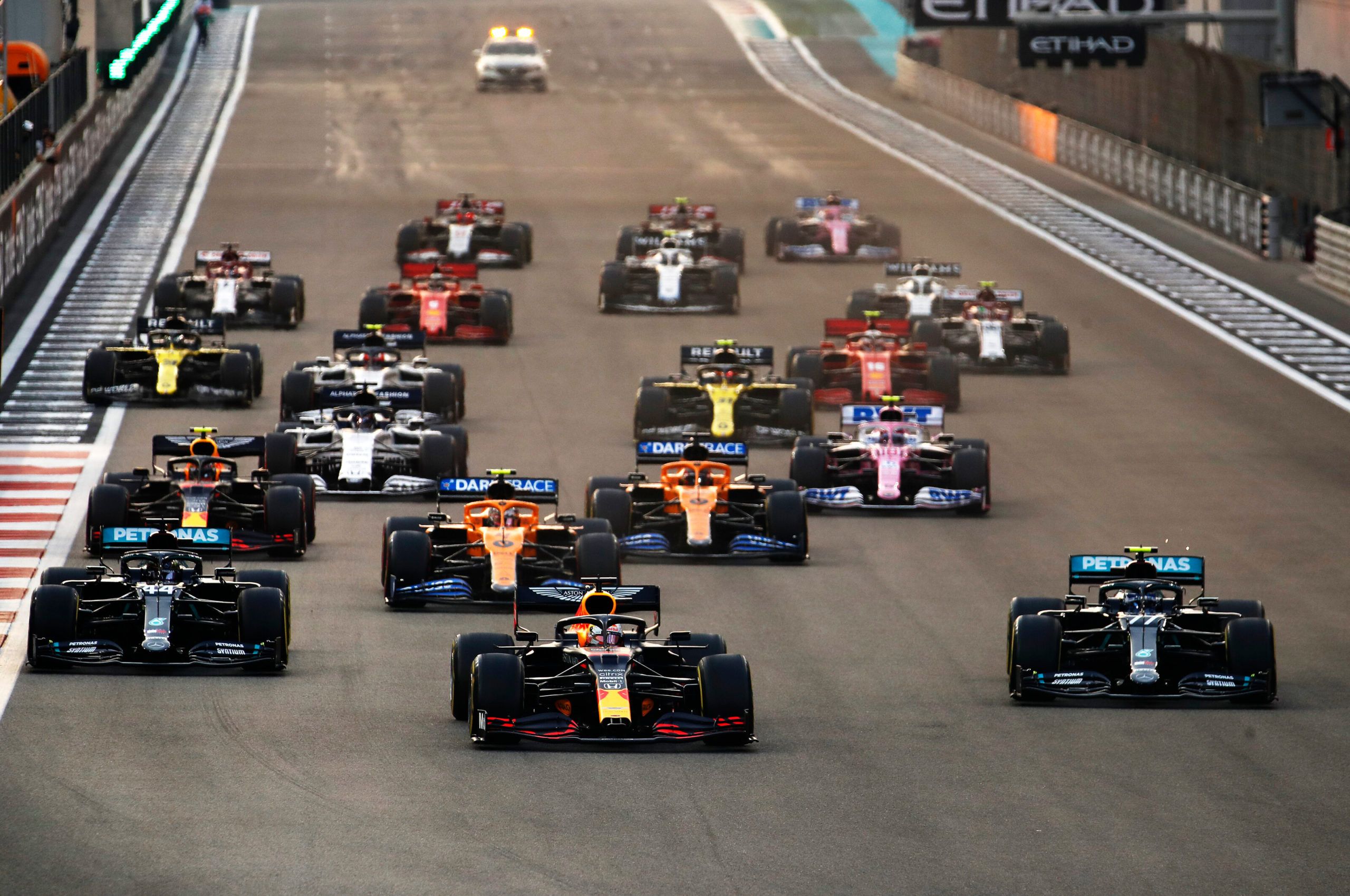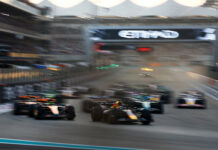With the 2020 F1 season done and dusted, FormulaRapida.net decided to draw out a ranking system in a new ‘Tier’ system, moving away from a traditional, individual ranked order.
The shortened 2020 F1 season had its share of strong performances from everyone on the grid, whether at the front of the field or at the back. For this reason, we decided to do away with the traditional structure of an tiered system of categorization.
We – Darshan Chokhani (DC) and Duncan Leahy (DL) – decided on the Tier system, utilizing three tiers with 7 teams among them, and the further three teams placed in a “sub-tier” category. Here’s how the line-up stacked up:
Tier 1:
Mercedes (DC) –
Much like with its driver Lewis Hamilton, placing Mercedes in the Tier 1 of the 2020 F1 season was a mere formality. The German manufacturer secured its seventh consecutive constructors’ title, creating a new record, as the domination only continued throughout the year. Aside from one poor outing in the Sakhir GP, the team enjoyed an otherwise straightforward season. One can say that the Turkish GP had the chance to become nightmarish for the team as well, but the eventual win changed that perception. Another minor flaw was the penalty it earned for allowing the British racer to do a practice start from a position where the drivers’ weren’t allowed to in Russia, and pitting in a closed pitlane during the Italian GP.
Even though Valtteri Bottas had a tough time he wound up second in the F1 drivers’ standings, his performance demonstrating the work of Mercedes. The team eventually scored 13 wins and gathered 27 podiums, with 15 poles and eight fastest laps. They also had the innovative DAS on their car, which gave them greater control over tyre temperatures – a feature which certainly would have helped them on multiple occasions. Reliability was one of few weak points in the team’s season, particularly pertaining to the MGU-K element of the engine. Both the factory team, and customers Williams and Racing Point, faced issues on this front.
McLaren (DL) –
On few occasions did McLaren fail to capitalize on their pace, decisively outperforming their car – and that too by some margin – early on in the season, clinching an early lead in the mid-field constructors’ championship fight, and retaining that lead until the Spanish GP – the sixth round of the season. They would reclaim the lead of the mid-field fight in the subsequent Belgian GP, despite having had one car eliminated from the race on account of reliability issues. This was a theme for McLaren in 2020: whenever the British team faced adversity, they managed to deliver. A rare low point came in the Russian GP – the lone race wherein McLaren failed to score. In Sochi, a crash for Carlos Sainz rendered him inoperative, and a poor outing for Lando Norris saw him finish a lowly 15th.
Later in the season, the Woking team would fall behind Racing Point in the constructors’ championship, but after capitalizing on a woeful race for their rival at the Bahrain GP, they would reclaim third. It was, however, a short-lived feat, as in the ensuing Sakhir GP they once more were overtaken. In a climactic finale, the team – dubbed “operationally brilliant” on one ‘F1 Nation’ installment – would recoup the coveted “best of the rest” position, doing what they had all season long and delivering when Racing Point were left vulnerable, this time by Sergio Perez’s retirement. Their consistency and uncanny ability to deliver to an exceptional degree when necessary, coupled with efficient technological development, made them a formidable opponent in the season, and ensured them a high spot on our list despite them having been helped by a 15-point deduction levied against Racing Point.
Red Bull Racing (DC) –
Between writers, there was a debate on whether Red Bull deserved a spot in Tier 1 or Tier 2. We considered the latter spot appropriate initially, but while writing we felt their flaws were outweighed by their strengths. Particularly, the work from their mechanics forced our hand, motivating us to put them in the first tier. The work in Hungary to fix Max Verstappen’s car on the grid was something extraordinary from them, and the consistent work in the pit stops – where they even won the DHL award – only showed the team work they possess. They were the only team to have sub-2 second stops and out of the Top 10 fastest pit stops in 2020, they occupied the first nine positions.
For us, this worked wonders, even though they had some issues with retirements and also getting the second car of Alexander Albon up to speed. Some of the upgrades from 2019 to 2020 did not work in the Thai driver’s favour as he struggled to be close to Verstappen. The team did try to help him as much as possible, and he only got better by the end of the year, although the gap to the Dutchman remained of a similar magnitude. On the results front, still, Red Bull managed to score two wins and 14 podiums along with one pole and three fastest laps. On the engine side as well, Honda had some troubles, but the reliability was much better in 2020, the manufacturer the only ones to not have teams taking penalties.
Tier 2:
Renault (DL) –
Renault sat a depressing sixth in the constructors’ championship after the Spanish GP, a race during which they failed to score. Though a British GP performance that saw the team’s Daniel Ricciardo and Esteban Ocon finish fourth and sixth respectively showed promise, it appeared as though the team were on course for another unimpressive season, after a 2019 in which they went backwards when compared to the season preceding it. The team, though, experienced a reversal after the Belgian GP, when their cars finished fourth and fifth. Attributed to the car’s straight-line speed, the result preceded another relatively strong race for the French outfit in Italy, whereupon they rose from sixth to fourth in the championship. A further strong result in Russia, and a first podium for the team at the Eifel GP were indicative of their late-season pace, as was a remarkably impressive Sakhir GP, during which they bagged a season high of 28 points.
Strong collaboration at Renault, despite knowledge that one driver from their line up – Daniel Ricciardo – would not be returning, meant that they were able to recover from a weak opening phase allowed them to challenge for third in the constructors’ championship, only losing out to Racing Point by 14 points, and to McLaren, by 21, to come fifth in the end. Their car also appeared more competitive than once thought, and was as easy on its tyres as Renaults of years prior, enabling the team to utilize unique strategies – strategies which, at times, were highly advantageous.
Racing Point (DL) –
Though Racing Point ultimately secured fourth in the constructors’ championship, the team repeatedly failed to capitalize on an exceptionally quick RP20, a car at times considered the second fastest on the grid. For example, the British team lost an opportunity to claim third in the championship at the British GP, and although at that time their replacement for the COVID-positive Sergio Perez – Nico Hulkenberg – could not be expected to perform at the same level of the Mexican, a late-race puncture for McLaren’s Sainz took him out of the points, so both teams were firing on only half of their cylinders. In the first race at Silverstone, therefore, the team lost a further eight points to their adversary – despite a demonstrable pace advantage possessed by their W10-inspired car. This car also proved a hinderance to their success, its brake ducts drawing the attention of rivals and meaning they would be docked 15 points. A controversy that formed a rift in the mid-field, this was another blight on their season.
Conversely, Racing Point’s rapid car was an achievement in itself, as the team had its best car in some time, and still managed to fend off Renault’s late-season charge despite their points deduction. Securing a race win and a double podium in the Sakhir GP, and earning two further podiums were also impressive feats from the team in its final season under the Racing Point name, before it adopted Aston Martin branding on the first of the new year.
AlphaTauri (DC) –
Even though the disparity between their two drivers was demonstrable, AlphaTauri did enough to be in the second tier, for them repeatedly breaching into the Top 10, while also registering their first F1 win in Monza since the exceptional victory from Sebastian Vettel. Pierre Gasly seemed on-song from the get-go as he shook-off the ghosts of his 2019 season quickly, to log some solid midfield performances. The win in Monza was the icing on the cake that he required, as teammate Daniil Kvyat slowly started to pick up his pace. His drive in Imola allowed him to reclaim the confidence he was looking for in all of 2020 and even though it wasn’t enough to save his seat, the Russian helped the team to score 107 points in all, their first-ever 100+ points haul ever since they started operations as Toro Rosso.
Sub-tier:
If Mercedes were expected to be in Tier 1, Ferrari (DC) were likewise anticipated to be in the sub-tier, even though they recovered well towards the end of the year. The positive results from the Italian manufacturer already started to diminish towards the end of 2019 and it only got worse in 2020. Even though they did exceedingly well on Charles Leclerc’s side, they struggled at the same level on Sebastian Vettel’s. They had three podium finishes in all, but finishing sixth in the standings is their worst result in 40 years. For a prestigious marque like them, to not even get a Top 5 finish in the standings is a big drop for their standards. We felt Tier 3 was appropriate for the flashes of glory in the season – especially at the hands of Leclerc – but the team’s season was poor enough so as to be incomparable of those of the top tier.
Haas (DL) were among the teams that struggled the most in 2020, only earning three points in the entirety of their campaign – one during which they grappled with consequential suspension heat issues, and continued their downward trend of performance. A high point came for the team came at the Eifel GP, when drivers Romain Grosjean and Kevin Magnussen finished ninth and 13th, but barring this result and a notable Hungarian GP, they went without points. In the latter instance, an ingenious decision to pit for slick tyres on the formation lap while others on the grid stayed out on intermediates proved effective, but a poor race from then on, and a penalty for coaching on the formation lap unraveled their efforts and what was third and fourth soon became 10th and 16th.
Joining the two Ferrari-powered F1 teams in the list is Alfa Romeo (DC), who dropped in performance as well, partly due to the engine troubles but also on the chassis side, the team rarely able to penetrate the Top 10. Both Kimi Raikkonen and Antonio Giovinazzi showed some good performances, whether it was their rocket starts or the points scoring finishes, the low points were more as they just couldn’t push themselves into the Top 10 often.
Williams (DL) were another team to find themselves languishing at the back of the pack in 2020, the only outfit to go without points in the season, and the first F1 team to not score championship points since 2015. Their race pace was poor, but Qualifying pace was vastly improved, as was shown in one highlight of their season, the Hungarian GP Qualifying. On that occasion, both cars breached into Q2, with George Russell 12th and Nicholas Latifi 15th. It was the team’s best Qualifying since 2018, and though the team’s resolve during a change in ownership later in the season was noteworthy, an overall lack of race pace hurt their standing on our list.
Here’s the F1 2020 drivers’ list: https://formularapida.net/f1-2020-drivers-categorised-in-tier-system-for-their-performances/
Here’s our tier system of F1 driver performance
Here’s F1 stats difference from 2019 to 2020



















